Text
I like how you brought in the Esports competition because it shows how big gaming really is. There is even now a streaming website called Twitch where people can stream themselves playing a game while other watch and send comments. Its become a massive platform with 100+ million users on there, with 15 million daily active users (Smith, 2018).
Social gaming nowadays is becoming such a serious past time and it makes me wonder how many people are sitting at home on their couch in front of the television or computer and not getting outdoors more and getting active.
References:
Smith, C 2018, 52 Amazing Twitch Stats and Facts (May 2018) | By the Numbers, DMR, viewed 3rd June 2018, <https://expandedramblings.com/index.php/twitch-stats/>.
Social gaming
Whilst most people play games to have fun and the pass the time, many players also use games for other reasons like to reduce stress, to keep an active mind, the adrenaline rush, being challenged and being able to do things in the online environment that would not be possible in real life.
Online gaming is quite social as most games allow players to compete and collaborate with others within the game. Many gamers extend their gameplay further by creating walkthrough videos and posting them on YouTube which allows them to share their knowledge of the game.
Esports
Esports is where players compete or watch others compete have become popular around the world, they have become an extension of interactive entertainment. At an Esport event “cyber-athletes” as they are known to compete individually or as part of a team for prize money worth millions of dollars. Esports is one of the fastest growing sectors in worldwide entertainment with an estimated global audience of 385 million and growing more than 41per cent annually. This Esport craze has reached Australia with Melbourne set to stage this country’s biggest annual video gaming tournament in September this year.
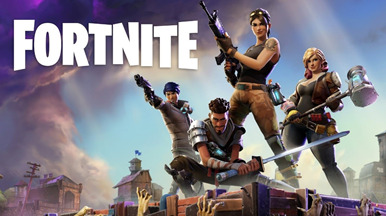
If you have a pre-teen or teenage male in your house you may be familiar with a game called Fortnite, which my 12-year-old is currently playing as I write this. Fortnite Battle Royale is the free version where up to 100 players compete against each other online to be the last person standing. Players are dropped onto an island, where they make their way around to find weapons and battle other players and characters, they must also battle other characters and protect themselves against deadly storms. Whilst the game is free you can purchase bonus weapons and extension packs, but generally, you unlock new items as you progress through the game.
Code of Conduct
Epic the makers of the game ask that players abide by the code of conduct which is:
Respect other players. Don’t be a sore loser, no hate speech, threats.
Play fairly and within the rules of the game. Don’t cheat, exploit bugs and glitches
Keep account information safe and private.
Good luck and have fun!
They advise players that if they see other players not respecting the Fortnite code to contact player support and they claim to investigate all feedback and act if necessary. A quick look at the player forum showed that many players were calling for action against players who they believe are guilty of breaching the code of conduct. They do however appear to come down on hard on anyone who is developing cheating software as they have filed lawsuits in the US against two individuals for creating software that enables players to cheat in the game. Pretty heavy-handed approach considering one of the cheaters is 14 years old!
References
Brand, J, Todhunter, S, Jervis, J, 2018, Digital Australia Report 2018, Eveleigh, NSW, IGEA
Cavanagh, C, Rolf, P, 2018, ‘Melbourne scores big in push to be eSports capital’, Herald Sun, 3 June, p 13.
Epic Games c. 2018, Fortnite code of conduct, viewed 3 June 2018, <https://www.epicgames.com/fortnite/en-US/news/fortnite-code-of-conduct>
Hall, C, 2017, Epic games is suing more Fortnite cheaters, and at least one of them is a minor’, Polygon, 27 November, viewed 3 June 2018, <https://www.polygon.com/2017/11/27/16705184/epic-games-suing-fortnite-cheaters-minor-14-years-old>
Stuart, K, 2018, ‘Fortnite: a parent’s guide to the most popular video game in schools’, The Guardian, 7 March, viewed 3 June, <https://www.theguardian.com/games/2018/mar/07/fortnite-battle-royale-parents-guide-video-game-multiplayer-shooter>
2 notes
·
View notes
Text
Hey Chantelle!
I love this read! I think its really interesting how you noted that we no longer make our first impressions in person! I have never really thought of it like that, but it's so true!! With social media such as Facebook people can see the things we share and post such as our statuses and images, also seeing things we tag our family and friends in, which I dunno about you but some of the things I tag my friends in shouldn’t be seen by others ahaha!!
I remember going on a Tinder date once, and the guy already knew everything about me because of my social media pages like Instagram. At the time I had just bought a new laptop and posted a photo on Instagram and he was asking about it... I didn’t think much of it at the time but now thinking about it, it doesn’t leave much to the imagination.
Hope you’re enjoying the unit!
Robford.
W9: Social imaging and what strangers know about you
If you’re a 90’s kid, like me, you may remember trying all too aggressively to fit your large disposable or digital camera in your backpack ready for school camps and shopping trips. Trust me – the struggle was real. But oh, how times have changed.
Now, new innovations have enabled these cameras to be integrated into our beloved smartphones to a point where at times, they can be considered an extension of our limbs – always within an arm’s ready and ready for any moment to be captured. Where we would usually only share with close friends weeks later, we now share instantly with the world. Whoever is interested can view these photographs just by searching your name if they so desire. We are now visual beings, and quite frankly; no longer make our first impressions in person. I know, it’s scary.

The way that we capture – or remember – the moments in our lives, how we share these and who we share these to has been revolutionised. Personal photography is now a part of our culture. But, how does this influences our digital footprint, or change what strangers can know about us before they even know our name? Turns out – a lot.
Being ‘tagged’ in a photograph is an ubiquitous affordance of social media, and one which has enabled connectivity and interaction among users – we tag businesses, locations, other users, and can check into locations, events, and even our own home with a detailed map given to anybody who wishes to view it. Clearly, it’s a crafty innovation, however it also makes us scarily searchable via images – which is particularly problematic when tagging is made publicly visible through social media channels without ones consent, with young people reportedly expressing concern and degrees of anxiety when considering their own visual landscapes among social media channels (Hand, 2012, p. 175).
‘Tagging is thus both a way of finding and being found’ – Swinburne Online, 2018.
Network visuality is a term used to describe the way images have become vital to the formation and maintenance of our digital communication (Swinburne, 2018), and selfie culture is a term used to describe the notion of self-portraits typically taken in a fashion which plays on particular representational desires (not that I really need to explain that one). Both are prominent concepts in the rise of social imaging, and something I touch on in an earlier blog post here.
Ever wondered how easy it is for strangers to know more about you, based solely on the information and images you post on social media? Take a look at this confronting social experiment:
youtube
Clearly, social imaging leaves little privacy.
How would you feel if you were approached by a stranger who knew your dog’s name, the colour of your bedroom walls, or even the type of TV you purchased over the weekend? Would you reconsider the images you post online after watching this?
References
Hand, M 2012, Ubiquitous Photography, Polity Press, Cambridge.
Swinburne Online, 2018, ‘9.2 Ubiquitous photography’, MDA20009: Digital Communities, Swinburne Online, viewed 16 May 2018, Link
Vale, J, 2013, Social Media Experiment (online video), YouTube, November 2018, viewed 16 May 2018, Link
13 notes
·
View notes
Text
Do You Wanna Play A Game?
FortGaming has changed immensely since when I was born. In 1995 video games such as Rayman (1995) Warcraft II (1995) and Mortal Combat 3 (1995) were released and were some of the most popular games throughout that year. Flash forward to today, and gaming isn’t what it used to be. We are now in such a technology-driven world, gaming has become more and more popular especially among the male demographic creating games to peak their interest such as football and soccer games, to shooting and war games, graphics, speed and technology has upgraded, to say the least. But in our technology-driven society, social media has made it possible for people to play games with other all over the world, but what effect does this have on the individuals playing?

I’m sure we have all seen people glued to their phones, television screens or other gaming device trying to get their attention, but it seems to be a lost cause like they are on another solar system and the only way to get their attention is to take matters into your own hands. These sorts of people are known as gamers, who take gaming so seriously burning the house down wouldn’t even stop them, this causes serious health concerns for the individuals playing. But recently games such as Pokémon GO have been released which forces individuals to get out of the house to “catch them all”. They can also verse other players in the Pokémon gym, and no not a gym where you to show on Snapchat how much you lift, but a gym where the virtual characters verse each other in a fight. The internet and social media have made this sort of thing possible so that people can virtually fight one another whether it be in a Pokémon gym or on the battlefield.
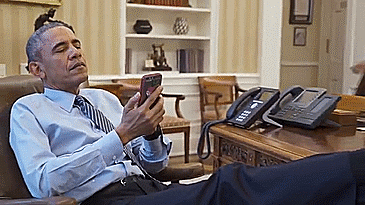
Most recently, a game by the name of Fortnite has come into the midst of making it one of the most popular games in the world. Metro Gaming (2018) reported that in February the developers reported having 3.4 million simultaneous players. Fortnite is a 100-player vs player universe where you can download for free and compete to be the last person standing which was released by Epic Games. One thing with social gaming is the concern of player being disrespectful and rude to other players, Fortnite’s code of conduct is straightforward and does not tolerate disrespectful players which is reassuring for parents of younger players playing as the games is available on all devices, from Mac, PC, Xbox, tablets and your mobile device.
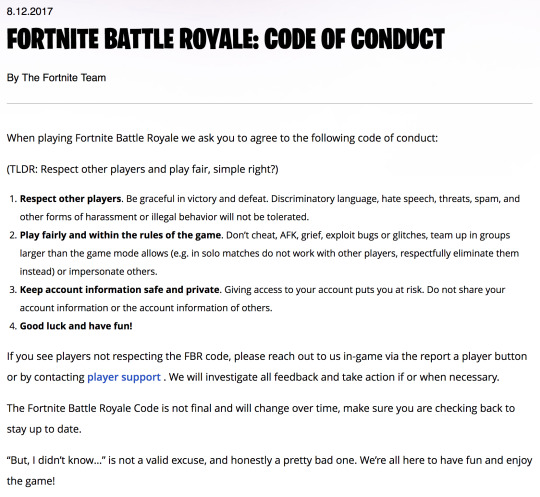
References:
Metro Gaming 2018, ‘How many people play Fortnite Battle Royale’, METRO, 5th March, viewed 3rd June 2018, https://metro.co.uk/2018/03/05/many-people-play-fortnite-battle-royale-7363495/.
The Fortnite Team 2017, ‘Fortnite Battle Royale: Code of Conduct Screenshot’ [image], Fortnite Battle Royale: Code of Conduct, Epic Games, viewed 3rd June 2018, <https://www.epicgames.com/fortnite/en-US/news/fortnite-battle-royale-code-of-conduct>.
1 note
·
View note
Text
How many followers do you have?
Instagram is one of the most popular image sharing social media platforms at the current moment with 800 million users worldwide (Mathison 2018). Interaction is easy, when you post a photo your followers can see it and like and comment on it, also posting photos can gain you more followers. Instagram themes are all the rage with popular Instagrammers who have big followings, this is when they take a photo and edit it to look similar to other images that have been posted to their feed. Their followers come to except this sort of content from them and this gives them an expectation when viewing their images. Larissa Hjorth (2011, p. 51) explained this sort of content to be networked visuality. She explained this term as “by 'imaging communities' I refer to all the mobile media UCC [user created content] practices that can take the form of the visual, textual, aural, and haptic modes of expression. From SMS to camera phone images, these practices of imaging communities reflect forms of intimacy, labor, and creativity, which provide ways for configuring, and intervening, the region's 'imagined community'.” This same kind of practice can be seen on the video sharing platform YouTube, which content creators such as Manny MUA, Casey Niestat, Shane Dawson, Liza Koshy and Jenna Marbles, creating content that is recognised by their fans, this gives their followers a feeling of affinity as they feel a part of their video and feel a sense of membership. These social media influencers are a part of a community that is free for them let out their creative side and show people their personality through their photos and their videos.

Now that’s a community I want to be a part of!
References:
Hjorth, L 2011, ‘Mobile spectres of intimacy: the gendered role of mobile technologies in love – past, present and future’, in R, Ling & S, Campbell (eds) The Mobile Communication Research Series: Volume II, Mobile Communication: Bringing Us Together or Tearing Us Apart? Transaction Books Edison, NJ , pp. 37-60.
Mathison, R 2018, 28+ Useful Instagram Statistics for Social Media Marketers, Hootsuite, viewed 23rd May 2018, https://blog.hootsuite.com/instagram-statistics/.
1 note
·
View note
Text
Hey Chanelle! Awesome work on your post, I really enjoyed reading it!
I liked how you tapped into the reliability of the information that is given and how journalists need to make sure they go to the source for the correct information. Reminds me when I had to do research surrounding 2016 Presidental Election and all the misinformation on social media surrounding that, like for instance that Harambe the gorilla received 15,000 voted to become President of the United States (Perrott, 2016).
Perrott, K 2016, ‘”Fake news” on social media influenced US election voters, experts say’, ABCNews, 15th November, viewed 14th May 2018, <http://www.abc.net.au/news/2016-11-14/fake-news-would-have-influenced-us-election-experts-say/8024660>.
W8: Crowdsourcing & the notion of ‘reliability’
How many of us recall the typical nature of fundraising? Or picking up an encyclopedia to find information on or advice about something you knew nothing about? How about those times we needed to get somewhere and the only option was to conform to an inconveniently timed bus schedule and a route, which somehow still had you walking a third of the distance?
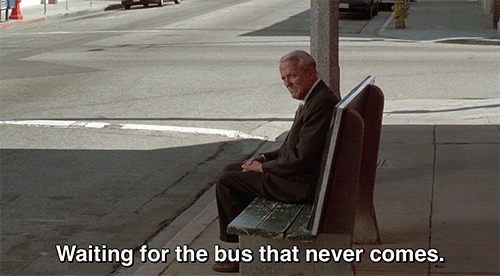
If any of those memories has you cringing at your computer – first of all, you’re not alone. Secondly, I’ve got good news for you: thanks to our modern internet, things like this have been dramatically transformed.
Our digital sphere has progressed to such an extent that it’s effectively reached new, revolutionary heights for the benefit of its users – we’ve been able to create new services, generate new sources of information, and even develop new modes of transport. Yep, transport.
Fundraising for a project close to your heart can now reach new international audiences at the click of a button, from the comfort of your own loungeroom – think GoFundMe. Individuals can now seek specific and even localized advice or information from friends and strangers by typing a few words on their keyboard – think advice-oriented Facebook groups. And lastly, we as commuters can now contribute to the convenience of a direct travel route for other commutes in exchange for cash, based on the concept of carpooling - think Uber.
Crowdsourcing
These new innovations describe the concept of crowdsourcing, made possible by our digital sphere. On a broader level, ‘crowdsourcing’ is described as an idea, task or concept that exists only by through the contribution and participation of others through offering work, skill, money or experience (Brabham, 2013, p. 3). When combined with the participatory nature of social media, it’s no wonder this is the newest revolution. This can allow users to gauge the real-life and real-time impacts in the wake of a disaster or crisis – in fact, journalists frequently now rely on twitter feeds and trending hashtags to generate accurate coverage on a breaking story. Risky, I know. You can read more about this in John Jewell’s analysis here.
It begs the question: with so many active participants on social media – how can we verify the information that is shared?
Studies reveal the public will rely on social media to find and share information in a crisis (Dailey and Starbird, 2014, p. 447), but it’s also no secret the internet is riddled with false or exaggerated claims. Heather Ford explores this common concern, and has revealed an effective method to ensure reliability is an established verification process of journalists, which includes; speaking to those on the ground via phone, investigating their identies and social accounts for evidence of locations, and sourcing (and citing) information from other journalists (Ford, 2012, p. 37).
However, in a time of crisis, how willing are journalists to adhere to these; and how much can we ever truly rely on the claims we see online?
Share your thoughts: Are you aware of an example where falsified information via crowdsourcing has sparked fake news to surface?
References
Brabham, Daren C, 2013, Crowdsourcing, The MIT Press, Cambridge Massachusetts; London, England
Dailey, D, Starbird, K, 2014, ‘Journalists as crowdsourcerers: responding to crisis by reporting with a crowd’, Computer
Supported Cooperative Work, vol 23, no 4, pp. 445-481
Ford, H 2012, ‘Crowd Wisdom’, Index on Censorship, vol. 41, no. 4, pp. 33-39.
Jewell, J, 2013, ‘How Twitter has helped the emergence of a new journalism’, The Conversation, viewed 8 May 2018, available via The Conversation
8 notes
·
View notes
Text
CrowdSurfing
9Whenever I think of crowdsourcing I immediately think of the feature on Facebook that allows you to say “I’m okay” in a time of a crisis. This feature is smart but makes me think does this lend us to becoming lazier when it comes to a natural disaster and other unforeseen events.
But first what is crowdsourcing??

Crowdsourcing can be defined as a type of online participation in which individuals, groups, institutions and organisations come together to complete a task, in which the volunteers undertaking the task bring with them their money, knowledge and experience which entails a mutual benefit (Brabham, p. 2).
So basically, like charity.

When we look at past events, take for instance the November 2015 Paris attacks, social media did what it always does when there is a disaster like this one, it reacted. The hashtag #Prayers4Paris started trending on Twitter and Facebook released the option to add the French flag overlay on top of your profile picture, with more than 120 million people used this feature in the first 3 days (Bondarenko, 2017). These sorts of features aren’t exactly the most effective during a time of a crisis, we need to get back to our roots and get our hands dirty and lend a hand.
Some other examples of crowdsourcing, which in the case of a disaster are more effective, are sites including GoFundMe, a crowdfunding platform that allows people to create a page that permits their friends, family members and complete strangers to donate to their event, and Ushahidi a site that allows individuals to submit reports using their mobile phone or the Internet, which create a geospatial archive of events. These two platforms are ingenious ways to individuals being able to either give back to those who have been affected by the disaster and can’t be there to lend a helping hand or pinpoint exactly where individuals are in terms of a disaster and where the disaster is taking place.
Here is a TEDx Talk (2015) that explains more about crowdsourcing and “changing the world one idea at a time”.
References:
Brabham, DC 2013, Crowdsourcing, The MIT Press, Cambridge, Massachusetts.
Bondarenko, V 2017, ‘Facebook has quietly stopped offering flag profile picture filters after terrorist attacks’, Business Insider Australia, 8th June, viewed 14th May 2018, <https://www.businessinsider.com.au/facebook-stops-offering-flag-profile-picture-filters-after-terrorist-attacks-2017-5?r=US&IR=T>.
Tedx Talks 2015, Crowdsourcing Innovation: Changing the world one idea at a time | Rob Wilmot | TEDxKraków, 6th August, viewed 14th May 2018, <https://www.youtube.com/watch?v=Y1GZoamtgHQ>.
3 notes
·
View notes
Text
Week 7 - Trolling & Cyber bullying

http://knowyourmeme.com/memes/trollface-coolface-problem
Cyber bullying and trolling have become well known in society these days especially with such severe punishments being enforced in Australia and around the world when an indivudial is found guilty of cyber bullying. Cyber bullying and trolling, though have separate aims I feel they both go hand in hand.
Cyber bulling is the intentional act of using social media against a victim who cannot easily defend him or herself. Its main purpose is to either get revenge, to humiliate, intimidate or upset the victim while trolling is internet slang for individual who intentionally start an argument or upset others by posting inflammatory remarks for the sole purpose of angering people. Their purpose is a source of entertainment, to get attention and to upset the victim.
A good example of how cyber bullying effects people in society is the story of Ghyslain Raza, aka the Star wars kid who became an internet sensation through a video he made of himself school. Gyslain recently opened up about his life after his supposed fame and how he had to deal and how it made him suicidal. He luckily got through this dark time and went on to complete university with a law degree and is now an advocate against cyber bulling.
Cyber bullying is very real in this day and age and I for one believe that stricter punishments should be in place. Long gone are the days where bullying was only limited to the school area, with social media and its place in society victims do not have a means to get away.
Have a read of this article which goes into more detail about Gyslains Raza and his fight against cyber bullying.
http://gawker.com/star-wars-kid-breaks-silence-says-online-fame-made-h-499800192
youtube
8 notes
·
View notes
Text
CyberTroll
The internet is a wonderful place. I could spend hours online and deep dive from videos about cats to reading conspiracy theories about aliens. But one thing the Internet does not need it people who cyberbully and troll. Since being able to comment on individual’s photos, videos or statuses, users have been cyberbullying and trolling others to spew hateful messages and gain attention. Like back in the playground when the school bully would pick on you, the same goes on the Internet and you may feel, reading the comments about your post, the same as you did when you were being picked on at school.
What’s the difference?
A lot of people think that cyberbullying and trolling is the same, and in a way, it is but the goal of both is very different. A troll is a person who likes to gain attention, they mainly will comment on a popular video, news article or Instagram picture, their aim is to get the attention of other viewers, they crave a response from the original author and other commenters (McDunnigan 2018). Whereas a cyberbully is a person that is willingly targeting an individual. They want to humiliate and hurt the individual and unlike a troll who wants the attention on themselves, a cyberbully wants the negative attention on the individual (McDunnigan 2018).
The Victims
One of the most popular cases of cyberbullying was in October of 2012, 16-year-old Amanda Todd committed suicide from being bullied online. She had uploaded a video entitled “My Story: Struggling, bullying, suicide, self-harm” which has now been viewed over 12 million times, where the teen used flash cards to show to the camera her experiences of being blackmailed and bullied (NoBullying.com). After the death of Amanda, Canada’s lawmakers would consider a motion seeking the start for a national bullying prevention strategy which leads me to my next point…
youtube
What’s being done?
Unfortunately, cyberbullying is something that cannot be stopped, it is inevitable, but it can be prevented. A majority of the people who are getting cyberbullied are teenagers, kids who are in high school, and sadly if they are the victim of cyberbullying they do not tell anyone. Children need to be reassured that they are not alone, and that action will be taken to stop the bully.
2 notes
·
View notes
Text
Hey Jack! Awesome work on your vlog! You did a great job in making it more engaging and entertaining.
You’ve done well in identifying the slacktivism of the Paris terror attack, I remember seeing all of my friends on Facebook changing their profile picture to the Paris flag overlay. Even myself uploaded a photo of the Effiel Tower to Instagram thinking I would make a change.
I like how you identified that campaigns could make the most of slacktivism which I believe they have started to do with the result of online petitions that people can “sign” and GoFundMe pages.
Well done.
Slacktivism - VLOG POST
This week, I’m trying out my weekly post as a vlog instead, let me know what you think.
youtube
In 2015, Paris was hit with a horrific terrorist attack that ignited global support through social media. The hashtag #jesuisparis was used prolifically and Facebook launched a filter that allowed users to apply the french flag over their profile picture to show support (Rowley 2015). But what difference did this “support” make?
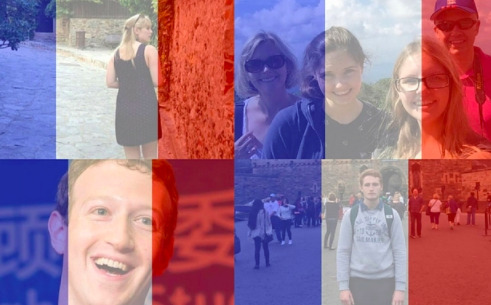
This case could be viewed as an example of slacktivism, referring to users who will get invloved in a cause only as far as clicking a “like” button or showing some kind of superficial support, but not taking action that could actually lead to social change (McCafferty 2011, p.17-18). This is closely connected to a point I was trying to make in last week’s post regarding politics: what we are seeing here is the barrier to participation being lowered so that more people can be involved, but simultaneously the quality of participation is lowered too. Concerns have been raised that this hollow form of activism could negatively affect real-world initiatives because people have a false sense of making a difference and feel they have done enough simply by liking or sharing (Milosevic-Dordevic & Zezelj 2016, p.113).
Is it possible that those people who were tagging #jesuisparis and changing their profile picture, may have been assuaged by their token efforts and as a result did not go on to make more of an effort?
It has been counter-argued that this “weak-tie” form of activism, can still lead to meaningful action as it provides a kind of stepping stone or gateway (Milosevic-Dordevic & Zezelj 2016, p.118). Indeed so-called slacktivism doesn’t seem to prevent traditional meaningful action, it may actually increase it (ibid. p.117).
If I can go interdisciplinary for a moment, I would link this idea to the low floor, high ceiling concept in pedagogy. This being the idea that the best kind of contexts for learning are those that are easy to enter, but allow for a great amount of growth and improvement (McClure, Woodham & Borthwick 2011). I think this is where I fall on this issue, that although it might seem frustrating to see all of these people posting about their minimal participation and superficial efforts to help a cause, at least they are in the room on the ground floor.
Admittedly, many or even most may stay at that basic level of action, but some may follow on to become more involved. I also think there is potential for clever campaigns to make the most of the slacktivists, i.e. make it as simple as possible to make a real difference. Campaigns such as those that simply ask social media users to give their support by forwarding on a pre-written letter to a politician. Or campaigns that let users make small donations and make a post about that support.

REFERENCES
McCafferty, D 2011, ‘Activism vs. Slacktivism’, Communications of the ACM, vol. 54, iss. 12, pp. 17-19.
McClure, L, Woodham, L & Borthwick, A 2011, ‘Using Low Threshold High Ceiling Tasks’, NRICH, September, viewed 22 April 2018, <https://nrich.maths.org/7701>
Milosevic-Dordevic, JS & Zezelj, IL 2016, ‘ Civic activism online: Making young people dormant or more active in real life?’, Computers in Human Behaviour, vol. 70, iss. 1, pp.113-118.
Rowley, L 2015, ‘How to Change Your Facebook Photo to Paris Flag Blue, White and Red’, Mic, 14 November, viewed 21 April 2018, <https://mic.com/articles/128552/how-to-change-your-facebook-photo-to-paris-flag-blue-white-and-red#.1Xioo627V>
IMAGES
https://mic.com/articles/128552/how-to-change-your-facebook-photo-to-paris-flag-blue-white-and-red#.1Xioo627V
https://www.telegraph.co.uk/news/worldnews/europe/france/11996735/Paris-attacks-How-to-change-your-Facebook-profile-picture-and-other-ways-you-can-help.html
2 notes
·
View notes
Text
#KONY2012
I’ll never forget, leaving my English class in March of 2012 when I saw two of my best friends sitting on the couch crowded around one of their phones watching a video on Facebook. I asked, “what exactly are you watching?” but got no response as they were so focused on this video. After the video ended the look and emotion on both of their faces had me confused and intrigued. They told me about the video and sent me a link to it, so that night when I got home from school I went online and watched a video entitled “KONY 2012”. I was baffled by the video and of course, had to share it with all my friends on Facebook, but I wasn’t the only doing so. My whole timeline was full of other people sharing and spreading the word about Joseph Kony. The 29-minute documentary which spread the word of Ugandan warlord, Joseph Kony has to date, been viewed over 102 million times from people all over the world and at the time, everyone knew the name, Joseph Kony.
youtube
Slacktivism can be described as users who will get involved in a cause or event only as far as ‘clicking like or attending’ from their couch, and that’s as far as their involvement will go (McCafferty 2011, p. 17-19). This term is something that can be applied to the KONY 2012 documentary, even though the video has been viewed 102 million times, on the 20th of April 2012 the “Cover the Night” campaign failed to paint cities with posters of Kony (Carroll 2012). In Sydney on the night of “Cover the Night” approximately only 30 activists turned out to plaster the streets with Kony while over 18,000 people “clicked attending” on the Facebook event page (Kennedy 2012).
Although back in the day, I thought by sharing this video of KONY 2012 I was making a difference, I realise now ‘clicking share’ on Facebook from my couch and doing nothing else did nothing. To this day Kony is still at large and the hunt for him went on till 2017 when the Ugandan military announced that “they were ending its pursuit of internationally known warlord Joseph Kony” (U.S. ends manhunt for African warlord Joseph Kony after top commanders killed or captured 2017).
So now over to you, do you remember seeing this video? If so, did you do anything to help?
References:
Carroll, R 2012, ‘Kony 2012 Cover the Night fails to move from the internet to the streets’, The Guardian, 22nd April, viewed 29th April 2018, <https://www.theguardian.com/world/2012/apr/21/kony-2012-campaign-uganda-warlord>.
<!-- /* Font Definitions */ @font-face {font-family:"Cambria Math"; panose-1:2 4 5 3 5 4 6 3 2 4; mso-font-charset:0; mso-generic-font-family:roman; mso-font-pitch:variable; mso-font-signature:3 0 0 0 1 0;} @font-face {font-family:Calibri; panose-1:2 15 5 2 2 2 4 3 2 4; mso-font-charset:0; mso-generic-font-family:swiss; mso-font-pitch:variable; mso-font-signature:-536859905 -1073697537 9 0 511 0;} /* Style Definitions */ p.MsoNormal, li.MsoNormal, div.MsoNormal {mso-style-unhide:no; mso-style-qformat:yes; mso-style-parent:""; margin:0cm; margin-bottom:.0001pt; mso-pagination:widow-orphan; font-size:12.0pt; font-family:"Calibri",sans-serif; mso-ascii-font-family:Calibri; mso-ascii-theme-font:minor-latin; mso-fareast-font-family:Calibri; mso-fareast-theme-font:minor-latin; mso-hansi-font-family:Calibri; mso-hansi-theme-font:minor-latin; mso-bidi-font-family:"Times New Roman"; mso-bidi-theme-font:minor-bidi; mso-ansi-language:EN-GB;} .MsoChpDefault {mso-style-type:export-only; mso-default-props:yes; font-family:"Calibri",sans-serif; mso-ascii-font-family:Calibri; mso-ascii-theme-font:minor-latin; mso-fareast-font-family:Calibri; mso-fareast-theme-font:minor-latin; mso-hansi-font-family:Calibri; mso-hansi-theme-font:minor-latin; mso-bidi-font-family:"Times New Roman"; mso-bidi-theme-font:minor-bidi; mso-ansi-language:EN-GB;} @page WordSection1 {size:612.0pt 792.0pt; margin:72.0pt 72.0pt 72.0pt 72.0pt; mso-header-margin:36.0pt; mso-footer-margin:36.0pt; mso-paper-source:0;} div.WordSection1 {page:WordSection1;} -->
Invisible Children 2012, KONY 2012, 5th March, viewed 25th April 2018, <https://www.youtube.com/watch?v=Y4MnpzG5Sqc>.
Kennedy, J 2012, ‘Kony 2012 campaigners become invisible’, B & T Weekly, 23rd April, viewed 29th April 2018, <https://search-proquest-com.ezproxy.lib.swin.edu.au/docview/1115014202?rfr_id=info%3Axri%2Fsid%3Aprimo>.
<!-- /* Font Definitions */ @font-face {font-family:"Cambria Math"; panose-1:2 4 5 3 5 4 6 3 2 4; mso-font-charset:0; mso-generic-font-family:roman; mso-font-pitch:variable; mso-font-signature:3 0 0 0 1 0;} @font-face {font-family:Calibri; panose-1:2 15 5 2 2 2 4 3 2 4; mso-font-charset:0; mso-generic-font-family:swiss; mso-font-pitch:variable; mso-font-signature:-536859905 -1073697537 9 0 511 0;} /* Style Definitions */ p.MsoNormal, li.MsoNormal, div.MsoNormal {mso-style-unhide:no; mso-style-qformat:yes; mso-style-parent:""; margin:0cm; margin-bottom:.0001pt; mso-pagination:widow-orphan; font-size:12.0pt; font-family:"Calibri",sans-serif; mso-ascii-font-family:Calibri; mso-ascii-theme-font:minor-latin; mso-fareast-font-family:Calibri; mso-fareast-theme-font:minor-latin; mso-hansi-font-family:Calibri; mso-hansi-theme-font:minor-latin; mso-bidi-font-family:"Times New Roman"; mso-bidi-theme-font:minor-bidi; mso-ansi-language:EN-GB;} .MsoChpDefault {mso-style-type:export-only; mso-default-props:yes; font-family:"Calibri",sans-serif; mso-ascii-font-family:Calibri; mso-ascii-theme-font:minor-latin; mso-fareast-font-family:Calibri; mso-fareast-theme-font:minor-latin; mso-hansi-font-family:Calibri; mso-hansi-theme-font:minor-latin; mso-bidi-font-family:"Times New Roman"; mso-bidi-theme-font:minor-bidi; mso-ansi-language:EN-GB;} @page WordSection1 {size:612.0pt 792.0pt; margin:72.0pt 72.0pt 72.0pt 72.0pt; mso-header-margin:36.0pt; mso-footer-margin:36.0pt; mso-paper-source:0;} div.WordSection1 {page:WordSection1;} -->
McCafferty, D 2011, ‘Activism vs. Slacktivism’, Communications of the ACM, vol. 54, iss. 12, pp. 17-19.
0 notes
Text
I agree with the reference you included from Manning et. al (2017), in that the use of social media does make politicians seem more retable and approachable but say the wrong thing and you’re trending on Twitter haha!! Also, the reference from Duggan & Smith (2016) is very true, people nowadays seem to be so much more fragile and can take one thing and completely turn it around to something you didn’t even mean. Which makes me think maybe social media for politicians isn't such a good idea, after all, seeing as this gives people the chance to respond and start debates with one another which can also cause controversy and land them on the front page.
Great read! Thanks!!
1B Week 5: politics, social media and contradictions, oh my.
Social media; these days it isn’t just for keeping in touch with friends and sharing memes.

(Source: https://memecrunch.com/meme/71JMW/oh-ok)
It’s not even just celebrities using their social media platforms to gain followers and “likes” anymore.

(Source: https://giphy.com/gifs/bored-kanye-west-16e1J9ztaZ3na)
Now our politicians are getting in on the act, utilising social media to advertise their campaigns, interact with potential voters, and perhaps more importantly, present a more human face to their policies. In fact, in 2016, politicians spent over $1 billion on digital advertising (Mendoza 2018).
With access to almost 3 billion active social media users around the globe (Lee et al. 2018, p. 1), it sounds like a good plan to garner more support, right?
Maybe not.
According to a report from the Pew Research Center:
“More than one-third of social media users are worn out by the amount of political content they encounter…”
(Duggan & Smith 2016)
Their findings don’t stop there either, with the authors going on to state that:
“… more than half describe their online interactions with those they disagree with politically as stressful and frustrating.”
(Duggan & Smith 2016)

(Source: https://www.theodysseyonline.com/school-life-hacks)
Why such frustration? Because the same platforms that allow politicians to interact directly with their publics, also allow these publics to misconstrue messages, become involved in highly emotionally charged political debates, and feel as though political content is encroaching on their carefully curated feeds (Duggan & Smith 2016).
Although many politicians believe social media will give the impression they are real people who wish to be more open and available to their publics, research shows that social media users believe politicians use social media purely to advance their own agendas (Manning, N et al. 2017, p. 134). This same study also revealed the public’s cynicism; with most respondents believing someone other than the politician was composing and posting content on their social media channels (Manning et al. 2017, p. 135).
Ok…so what about politicians who use social media to show their more human side? Those who post updates about their personal lives? Well, according to another research report, whether this will resonate with audiences or not depends largely on the politician’s gender. While disclosing personal information and stories made male politicians more likeable and gained them more potential voters, the same approach had the opposite effect on female politicians who were subsequently deemed “less competent and [people] became less willing to vote for her than when she promoted her public activities” (Lee et al. 2018, p. 11).

(Source: https://giphy.com/gifs/hillary-clinton-smh-shakes-head-3owypi2OOKXGm14VwI)
So, is social media a good idea for politicians or not?
According to Manning et al. (2016), the answer is…yes and no. Yes, in that the public wants politicians to be more approachable, reachable and authentic. No, in that when they do so, the public starts to lose respect, the politicians start to lose credibility, and their potential voters just end up longing for politicians who are professional and knowledgeable (Manning et al. 2016 p. 127).
Talk about contradictory. But then…we are talking about politics…
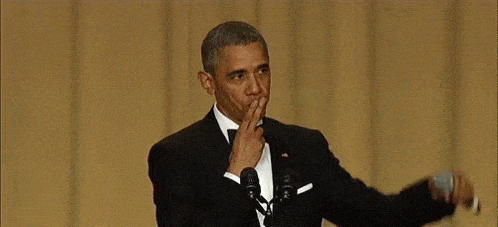
(Source: https://tenor.com/view/obama-micdrop-gif-5658368)
Further viewing:
“How effective is social media in politics?“
youtube
(Source: https://www.youtube.com/watch?v=JgaeGgYkU5g)
References
Duggan, M & Smith, A 2016, The Political Environment on Social Media, Pew Research Center Internet & Technology, viewed 21 April 2018, <http://www.pewinternet.org/2016/10/25/the-political-environment-on-social-media/>.
Ingram, M 2015, The Era of the Political Soundbite is Over. Now It’s All About the GIF., Fortune, viewed 22 April 2018, <http://fortune.com/2015/11/11/politics-and-gifs/>.
Lee, E, Oh, S, Lee, J & Kim, H 2018, ‘Up Close and Personal on Social Media: When Do Politicians’ Personal Disclosures Enhance Vote Intention?’, Journalism & Mass Communication Quarterly, pp. 1-23, viewed 20 April 2018, <http://journals.sagepub.com.ezproxy.lib.swin.edu.au/doi/abs/10.1177/1077699018754911#articleCitationDownloadContainer>.
Manning, N, Penfold-Mounce, R, Loader, B, Vromen, A & Xenos, M 2017, ‘Politicians, celebrities and social media: a case of informalization?’, Journal of Youth Studies, vol. 20, no. 2, pp. 127-144, viewed 21 April 2018, <https://www-tandfonline-com.ezproxy.lib.swin.edu.au/doi/abs/10.1080/13676261.2016.1206867>.
Mendoza, C 2018, Social Media Is Important For Politicians, But How Well Does It Work?, Newsy, viewed 21 April 2018, <https://www.newsy.com/stories/just-how-effective-is-social-media-in-politics/>.
Newsy 2018, How effective is social media in politics?, YouTube, viewed 22 April 2018, <https://www.youtube.com/watch?v=JgaeGgYkU5g>.
GIFs
‘Awkward Marco Rubio’, 2017 [GIF], Odyssey, viewed 21 April 2018, <https://www.theodysseyonline.com/school-life-hacks>.
‘Bored Kanye West’ 2018? [GIF], Giphy, viewed 22 April 2018, <https://giphy.com/gifs/bored-kanye-west-16e1J9ztaZ3na>.
‘Hilary Clinton SMH’ 2018? [GIF], Giphy, viewed 22 April 2018, < https://giphy.com/gifs/hillary-clinton-smh-shakes-head-3owypi2OOKXGm14VwI>.
‘Obama Micdrop’ 2016 [GIF], Tenor, viewed 21 April 2018, <https://tenor.com/view/obama-micdrop-gif-5658368>.
‘oh ok’ 2015 [GIF], Memecrunch, viewed 22 April 2018, <https://memecrunch.com/meme/71JMW/oh-ok>.
6 notes
·
View notes
Text
Participation.
As social media rises, celebrities, brands, businesses, and even politicians are using this media platform to grow their population and share their content with the 3 billion other social media users. Focusing on politicians though, they have utilised this new platform to help to reach out to a larger and younger audience. Take that of YouTube personality Liza Koshy, a young social media influencer with over 17.5 million subscribers throughout her two YouTube channels, she is one of the most well respected and well-renowned influencer in the industry (Jurgensen 2017, p 1).
In November of 2016, Koshy uploaded a video to her channel “Liza Koshy Too” of an interview she conducted with former president, Barack Obama where they discussed how to get younger audiences involved in the presidential election, where even Obama himself noted “younger people are going to be the people that make the biggest impact in this country and this is the way to reach them” (Liza Koshy Too 2016). It was noted that only 1/3 of millennials voted in the 2012 election so for 2016 Presidential election, millennials were the target to get them voting for what they believed to be important.
youtube
Social media was an import tool for politicians in the 2016 election, where research done by the Borrell Associates estimated that $1.4 billion was spent on campaigns for digital advertising (Mendoza 2018). Also, research from Circle (The Centre for Information and Research on Civic Learning and Engagement) from Tufts University 50% of eligible young people voted in the 2016 general election (Circle 2017?).
Now more and more politicians are using social media to gain voters and get more people involved and aware, but if they didn’t use social media do you think millennials would still vote?

References:
Circle 2017?, Youth Voting, CIRCLE, viewed 23rd April, <https://civicyouth.org/quick-facts/youth-voting/>.
Jurgensen, J. 2017, ‘A Self-Made Star Shows One Way to Crack the Gen Z Code --- Advertisers are flocking to Liza Koshy, a 21-year-old YouTube celebrity’, Wall Street Journal, 27th November, p. 1.
Liza Koshy Too 2017, Barack Obama Interviews Liza Koshy, 5th November, viewed 20th April 2018, <https://www.youtube.com/watch?v=AW5dc5nUYa4&t=5s>.
Mendoza, C 2018, Social Media Is Important For Politicians, But How Well Does It Work?, Newsy, viewed 21 April 2018, <https://www.newsy.com/stories/just-how-effective-is-social-media-in-politics/>.
1 note
·
View note
Text
I agree with you when you said that there is a strong chance that I am a part of a counterpublic. At first, I thought you were wrong, I didn’t believe I was a part of any, but once I started to think about it some more, I realised that I was! YouTube is one of the ways many people pass the time looking at funny animal videos or watching the next viral video of a young boy yodelling in Walmart.
youtube
But YouTube also home to celebrities who we now identify as social media influencers. Watching all their videos and subscribing to their channel makes you a part of their community, their counterpublic. Allowing people to like and share and comment on the video allows users to feel a part of their community. Even some influencers have named their fandoms, for instance, PewDiePie called his fans bros and gives what he calls a brofist, Lousie Pentland who is better known as Sprinkleofglitter calls her fans Sprinklerinos and Jake Paul naming his fans Jake Paulers (Wikipedia, 2018).
Awesome work by the way!!
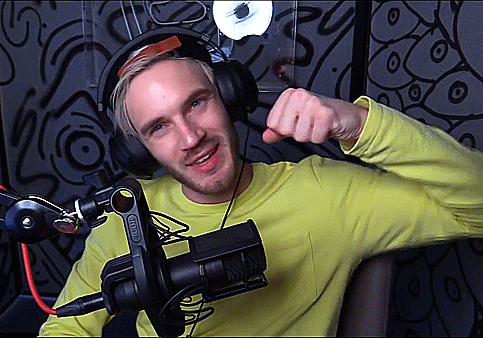
1A.1: Counter-whaaat?
There is no question our digitalised world comprises of online platforms that have, and will continue to; heavily influence the way in which we communicate and interact. In fact, boyd’s (2012) renowned concept of our society being ‘always online’ (boyd, 2012) could be argued as so precise, it may now be impossible to deny.
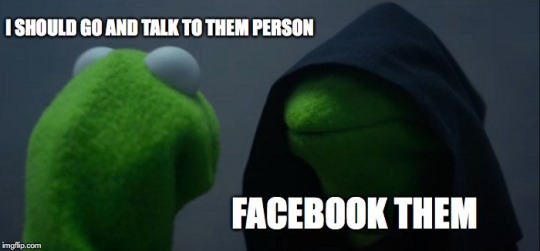
Recent learning experiences has allowed me to explore the way in which internet platforms can provide users the freedom to speak and be heard, as well as define, discuss and form unique communities and experiences. More communities are being born, cultivated and shaped in digital form now than ever before, and have a unique ability to provide users with a sense of self-identification and belonging.
This allowed me to appreciate the term counterpublics. In whichever way you utilise our digital world, I assure you, there’s a strong chance you’re part of a counterpublic. Perhaps even many.

… Allow me to elaborate.
Individuals have a desire to self-identify and represent under particular notions of society, and it was in this context that it was once famously argued; a single public sphere simply does not suffice (Fraser, 1993). We have a desire to form and express our identity, interests and needs by relating to and interacting with other individuals, or feeling a sense of community (Fraser, 1993, p.124), enabling counterpublics to form.
How do counterpublics fit into our digital world?
In short – I believe it simply empowers them. The digitalisation of our world has revolutionised counterpublics by enabling instantaneous growth and have power to evoke global influences. Internet platforms, particularly social media, provide endless opportunities for users to engage and interact with other users, organisations, or associations that share similar interests, motives or pursuits with the unique appeal of immediacy and distribution free of global barriers. New counterpublics are commonly formed after dominant notions within the public sphere arouse feeling of influence (Asen & Brouwer, 2001), evoking a desire to self-identify or interact with other users provoking a sense of ‘belonging’, despite being considered strangers to one another on face value. Warner (2002, pg. 424) sums this up perfectly:
“…Counterpublics come into being through an address to indefinite strangers… and counterpublic discourse also addresses strangers as not just anybody. They are socially marked by their participation…”
One particular counterpublic I personally identify with - and perhaps one of the most obvious - is my fellow students undertaking #MDA20009 with Swinburne Online, or the wider Bachelor of Media and Communications (Public Relations) students. Although this hadn’t necessarily originated from social media platform, my studies and relationships with fellow students are empowered by social media, and we’re now able to connect over similarities and common goals.
Now, over to YOU.
Can you think of a counterpublic you may identify with? Share you experience or thoughts via reblogging below.
References
Asen, R & Brouwer, D, 2001, Counterpublics and The State, Journal of Social Science, State University of New York Press, USA, 2001
Boyd, D 2012, ‘Participating in the always-on lifestyle’, in M Mandiberg (ed) The Social Media Reader, NYU Press, pp. 71-76.
Fraser, Nancy (1993). Rethinking the Public Sphere: A Contribution to the Critique of Actually Existing Democracy, The Phantom Public Sphere, Minneapolis: The University of Minnesota Press
Warner, M 2002, ‘Publics and Counterpublics’, Public Culture, vol. 14, no. 1, pp. 49-90.
12 notes
·
View notes
Text
This is such a good read Florencia!!
I like how you touched on the Obama campaign to influence younger individuals to vote! As a YouTube lover myself, I remember watching a video with one of my favourite influencers Liza Koshy interviewing Barack Obama to get younger people to vote and the importance of voting! It's amazing to see how someone who goes from making videos in her room to interviewing, at the time, the President of the United States!
youtube
Make of it what You[Tube] will
If I told you that bubble wrap was initially designed with the intention of being a wallpaper, what would you say?
You see, products are designed and unleashed on the market to fulfill a consumer need or desire but how that consumer chooses to use this can, many a time, change. This flexibility refers to its ‘affordances’. The malleable nature of the structure and overall versatility of social media has enabled these platforms to serve a range of purposes, many of which were unforeseen.
In 2005 the most important public video sharing platform in the world, YouTube was created by Steve Chen, Jawed Karim and Chad Hurley. They initially founded the platform after attending a dinner and finding it difficult to share the videos taken from the night.
Unbeknown to them, this platform would, over time become an evolutionary television network whose affordances have become endless, thanks to what Wellman calls their ability to “create social relationships and social structure”.
Youtube was one of the most important platforms that enabled the Obama campaign to reach the difficult young voters segment. It was where many artists like Justin Bieber and The Weeknd have been discovered. It has been a space where cyber revolutionaries like Anonymous have cemented their messages of vigilantism and where social consciousness has been awakened with videos like Kony 2012. Youtube has also become the launch pad of new careers – vloggers, where innovative individuals like Casey Neistat have been provided a space to share visual perspectives of the world around us. What’s more, this vocation has become a paid lucrative profession for some, sponsored by a range of different companies to represent or collaborate with them.
Youtube consists of virtual subcommunities of subscribers who interact and deliberate on the contents that is shared within the network. This success is largely due to the growth of what Mizuko Ito has coined Network Publics “the ways in which people are networked and mobilize with and through media”. This new online audience now “communicates through more complex networks that are bottom-up, top-down as well as side-to side”. Every week there seems to be a new ‘viral’ video being circulated that can come from a mobile recording, a student project or an independent organisation. Its virtual quality does not discriminate, becoming a cybernetic soap box for the global community.
Today we consider Youtube to be a broad platform of videos because of the evolutive affordances it has shown. Its consumers have marked and pushed the barriers of its uses allowing for its longevity in the market. As we evolve, so too will the affordances we find for the platforms like Youtube. Others like MySpace, who have not adapted to fulfill consumer requirements or become ‘stale’ have quickly been forgotten.
Wondering if Mark Z can help us find Tom..

References
Lange, P 2009, ‘Videos of Affinity on YouTube’, in P, Snickars & P, Vonderau (eds), The YouTube Reader, National Library of Sweden, Stockholm, pp. 70-88
Mizuko, I 2008 ‘Introduction’, in K, Vamelis, ed. Networked Publics, MIT Press, Cambridge, MA, pp. 1-14
Siapera, E 2012, ‘Socialites and Social Media’, in Understanding New Media, Sage, London, pp. 191-208
Wasserman, T. (2018). The revolution wasn’t televised: The early days of YouTube. [online] Mashable. Available at: https://mashable.com/2015/02/14/youtube-history/#NyA.6CifWPqE [Accessed 8 April 2018]
Wellman, B. and Berkowitz, S. (2008). Social structures, A Network Approach. 2nd ed. Bingley: JAI Press, pp.123-130
Youtube.com. (2018). About YouTube - YouTube. [online] Available at: https://www.youtube.com/yt/about/ [Accessed 8 April 2018]
10 notes
·
View notes
Text
YourTube
2005, the year that Hurricane Katrina formed over the Bahamas which later became a category 5 hurricane, girl group Destiny’s Child announced their official breakup, Tom Cruise jumped up and down on Oprah’s couch and the dating site YouTube launched!! Yes, you read that right, a dating site. YouTube founders Steve Chen, Chad Hurley and Jawed Karim founded that video sharing platform in 2005 while working together at e-payment website PayPal (Owings 2016, p. 8). Originally it was intended as a video dating site, as Karim uploaded the first video to YouTube entitled “Me at the zoo”. But people just started to upload all kinds of videos, from animal videos to videos of babies laughing, Chen, Hurley and Karim just went with it, this being a prime example of the theory of affordances. Affordances were first devised by psychologist James J. Gibson as he wrote about it in his 1979 article “The Theory of Affordance” and it was there where he wrote about the properties of an object that allow it to function. It was in the late 80’s where researcher Don Norman developed the theory of affordances where he stated that users assume an action that can be made outside of the action that is being presented to them (Wesolko 2016).
youtube
Nowadays, YouTube is a platform used by everyone to watch videos about anything and everything. It is the birthplace of boy band 5 Second of Summer, solo artists Justin Bieber and Ed Sheeran and acapella group Pentatonix where each upload videos of them performing and the rest is history, making each of them some of the most famous and accomplished artists in history. YouTube can now also be considered a job, and no I don’t mean working behind the scenes punching in 0’s and 1’s into an algorithm, I mean talking in front of a camera. So, came the term YouTuber’s, influencers such as Logan Paul, Miranda Sings, Zoella, PewDiePie and my personal favourites Shane Dawson and Jenna Marbles rose to fame with their personalities, their comedy and their videos making them some of the most famous people on the internet with each having millions of followers.

Today, YouTube is still the most used video sharing platform on the internet with over one billion users on the site (YouTube, 2018) and the affordances of the platform over time are shown, from original a dating website to now the biggest video sharing social media platform on the internet. It is down to the users who have pushed the boundaries of the platform which has made it what it is today.
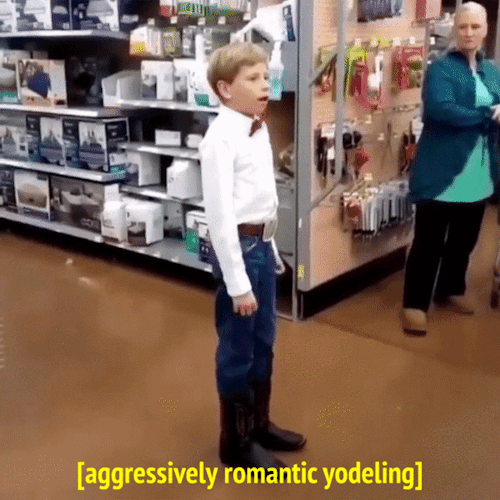
References:
Owings, L 2016, YouTube, ABDO Publishing, ProQuest Ebook Central.
Wesolko, D 2016, The Theory of Affordances, Medium, viewed 17th April 2018, https://medium.com/@danewesolko/the-theory-of-affordances-cb51fd138b3e.
YouTube, 2018, YouTube for Press, YouTube, viewed 17th April 2018, <https://www.youtube.com/yt/about/press/>.
0 notes
Text
But first, let me take a selfie!
Growing up my parents never had an understanding of the internet, only what they knew from the news and the paper, which was that it was a new up and coming thing that everyone was talking about. This new media made them uncomfortable because they didn’t know much about technology or how to use it. When we finally got the internet connection I was amazed at all the things you could do and see with just a few clicks, and as I grew up more and more websites were created which offered more and my parents become more accepting of the internet. When I was in year 7, I would have been about 13, all my friends were using a site called Myspace. They were creating their own profiles, adding their own music and pictures to their profile and I wanted to join. But because my parents were so wary about the internet they wouldn’t let one. So, one day, I snuck downstairs onto the computer and created my own site, and from then on, my love for the internet, but more specifically social media blossomed.
Social media has become a tool in a majority of people’s everyday lives, with the Sensis (2017) reporting that 79% of Australians were on one form of social media which was 10 points higher than the year before. But while social media usage continues to climb every year, we have begun to lose touch with what reality actually is and how social media can really ‘gratify’ some human needs which include feeling a part of a community of people, and being connected to a network, as well as put out a fake persona of how we want to be perceived rather than being who we are and as Wilken and McCosker (2014, p. 292) puts it “we are always managing the aspects of ourselves that we make accessible to others, and communication tools simply afford new possibilities to increase the extent of our visibility, in the process creating new opportunities and new anxieties.”
youtube
"These days those phones in our pockets are changing our minds and hearts because they offer us three gratifying fantasies. One, we can put our attention wherever we want it to be. Two, that we will always be heard. And three, that we will never have to be alone."
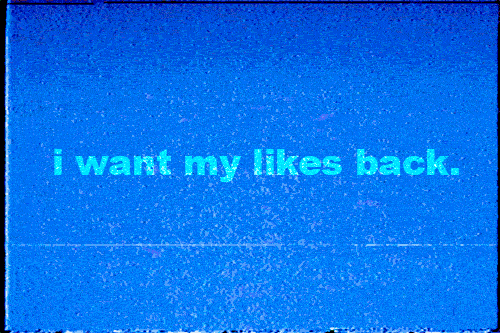
Although social media has its pros and cons, it will always be a tool that many people will use and love and can become extremely useful within society, for instance, I am able to keep in touch with my cousins who live on Europe with a few taps.
Reference:
Sensis 2017, Social Media Report, Sensis, viewed 15th April 2018, https://www.sensis.com.au/about/our-reports/sensis-social-media-report.
TED-Ed 2013, Connected, but Alone? - Sherry Turkle, 19 April, viewed 10th April 2018, https://www.youtube.com/watch?v=rv0g8TsnA6c.
1 note
·
View note